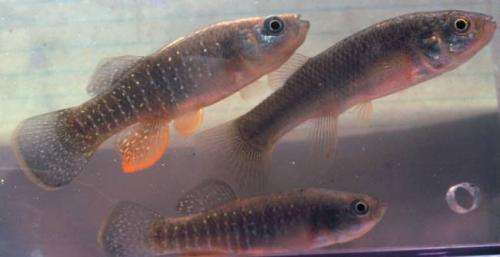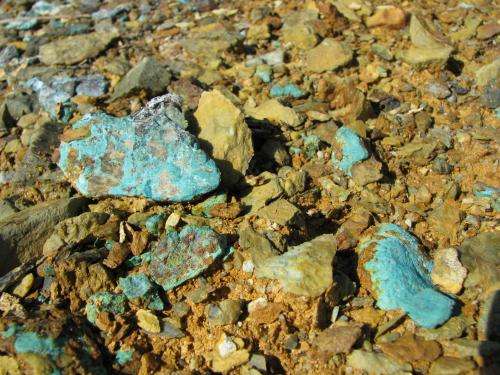Mine metals at Maine Superfund site causing widespread contamination

Toxic metals from the only open pit mine in an estuary system in the United States are widespread in nearby sediment, water and fish and may be affecting marine and coastal animals that feed on them beyond the mine site, a new Dartmouth study finds.
Mining contamination's effects on human health and aquatic and terrestrial wildlife is well documented in the United States, but the Dartmouth study is one of the first to look at the impacts of an open pit mine on an estuarine environment and the coastal marine food web.
The results, which appear in the journal Archives of Environmental Contamination and Toxicology, are further evidence that humans who eat seafood from areas close to contaminated sites may be at risk. A PDF of the study also is available on request.
As part of Dartmouth's Toxic Metals Superfund Research Program, researchers studied metal concentrations in the sediment, water and Atlantic killifish in the Goose Pond estuary at the closed Callahan Mine Site in Brooksville, Maine. The former open-pit, hard-rock mine is now a Superfund site being cleaned up by the Environmental Protection Agency. The Atlantic killifish, also known as mummichogs and mud minnows, live in brackish and shallow coastal waters in the eastern United States and Canada and are important food for larger fish that humans consume.

As anticipated, researchers found elevated levels of copper, zinc, cadmium and lead in the sediment, water and killifish. But they found the metal concentrations were surprisingly high in distinct areas of the marsh, indicating the metals are continually seeping from the mine's waste rock piles and debris. Results showed the metals from the sediment and water are being taken up by killifish in the Goose Pond estuary and have the potential to affect fish, birds and other animals that feed on them in nearby Penobscot Bay in central Maine. The results also showed the site represents a regional hot spot of copper, zinc and lead for the Gulf of Maine that is surpassed only by levels in some areas of Boston Harbor. Researchers hope their findings will inform the EPA's remediation decisions and provide a baseline for evaluating future actions at the site.
Provided by Dartmouth College

















